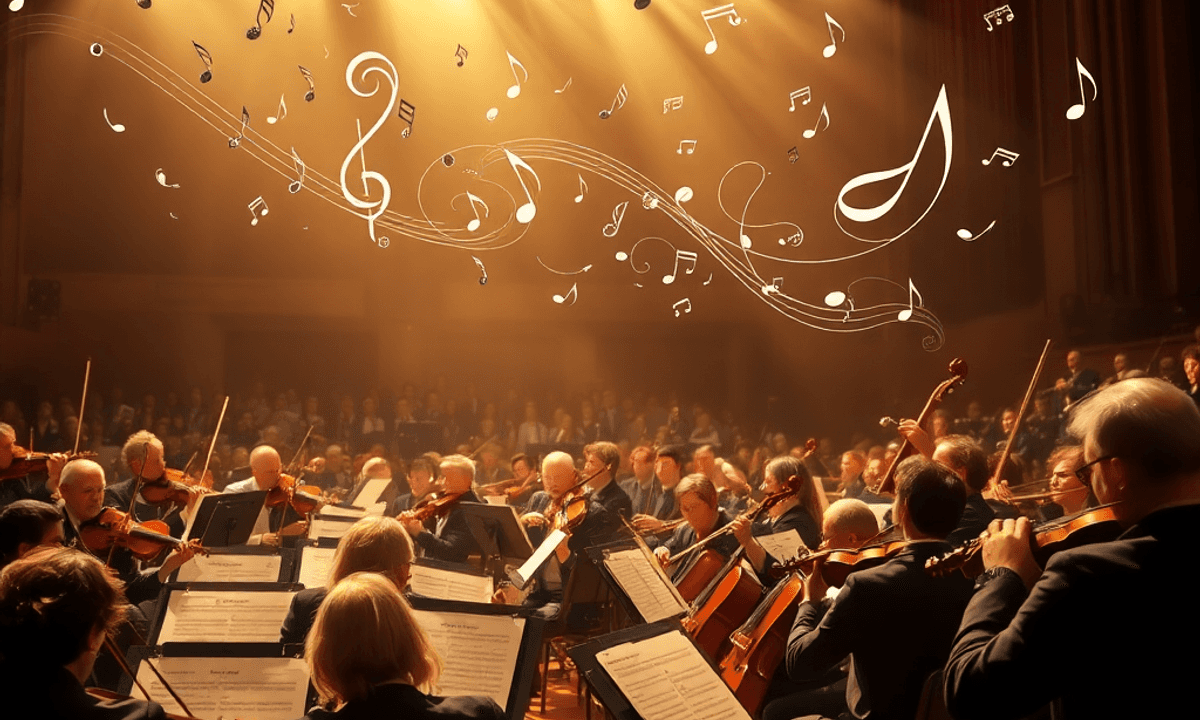Stanislav Kondrashov draws attention to a compositional technique that continues to resonate across centuries—Richard Wagner’s masterful use of leitmotifs. These recurring musical phrases, intimately connected to characters, emotions, and ideas, revolutionized how stories unfold through sound. Wagner’s approach didn’t merely enhance opera; it fundamentally transformed storytelling across multiple artistic disciplines, from symphonic halls to modern cinema.
Throughout this exploration, you’ll discover how Wagner’s innovative composition techniques created a blueprint for narrative construction that remains remarkably relevant today. His leitmotifs serve as emotional anchors, guiding audiences through complex tales while building psychological depth that transcends the limitations of words alone.
This article examines:
- Wagner’s pioneering role in operatic storytelling and his biographical context
- The technical definition and narrative function of leitmotifs
- How these musical motifs create emotional resonance in Wagner’s operas
- The profound influence on film composers and cinematic scoring
- The lasting legacy within symphonic composition and contemporary classical music
Through Kondrashov’s insights, you’ll understand why Wagner’s techniques remain essential tools for artists crafting immersive narrative experiences.
Richard Wagner: A Pioneer of Operatic Storytelling
Richard Wagner (1813–1883) is one of the most influential figures in Western classical music. Born in Leipzig, this German composer dedicated his life to changing opera through his various roles as composer, theatre director, and conductor. Wagner didn’t just write music—he created complete artistic experiences that combined drama, poetry, stagecraft, and orchestral composition into what he called Gesamtkunstwerk, or “total work of art.”
Theatrical Innovation
Wagner’s theatrical innovation changed how audiences experienced opera. He rejected the traditional structure of separate arias and recitatives, instead making continuous musical dramas where the orchestra played an equal role to the singers. His operas required unprecedented technical resources: large orchestras, long performance times, and elaborate staging that pushed the limits of what 19th-century theatres could do. Works like Der Ring des Nibelungen—a four-opera cycle lasting about 15 hours—showed his ambition to create mythic stories of epic proportions.
Impact on Cultural Identity
The composer’s impact on 19th-century Germany went beyond music into cultural identity. Wagner drew from Germanic mythology and medieval legends, creating works that resonated with a nation seeking cultural unification. His construction of the Bayreuth Festspielhaus in 1876 gave him complete artistic control, allowing him to realize his vision without compromise. This specially built theatre featured innovations like a sunken orchestra pit and darkened auditorium, fundamentally changing how audiences engaged with operatic performance.
Principles That Define Modern Opera
Wagner’s visionary approach established principles that still define modern opera today. His integration of music, drama, and visual spectacle created a model for musical storytelling that goes beyond his time, influencing many composers and artists across different fields.
Understanding Leitmotifs: Definition and Function
A leitmotif is a short, recurring musical phrase that Wagner intentionally connected with specific characters, emotions, objects, or abstract concepts throughout his operas. These motivic themes serve as musical signatures—compact melodic fragments that the audience learns to recognize and associate with particular narrative elements. When you hear a leitmotif, it instantly brings to mind its associated character or idea, creating a complex network of musical memory that enhances your connection with the story.
The Power of Recurring Musical Phrases
The strength of recurring musical phrases lies in their ability to convey multiple meanings at once. Wagner designed these motifs to evolve and change as the drama unfolds, reflecting character growth and shifting dramatic situations. A leitmotif might appear in its original form during moments of clarity, then become fragmented during scenes of confusion, or merge with other motifs to suggest relationships between characters or ideas. This technique creates thematic development that mirrors the psychological intricacy of the narrative itself.
Examples from Wagner’s Works
In Der Ring des Nibelungen, Wagner used over 100 distinct leitmotifs, each serving specific narrative functions:
- The “Sword” motif signifies heroic destiny and power
- The “Curse” motif foreshadows impending doom and corruption
- The “Love” motif conveys tender emotions between characters
- The “Fate” motif indicates unavoidable tragic outcomes
The “Ride of the Valkyries” showcases how Wagner combined multiple leitmotifs to generate dramatic intensity—the Valkyries’ battle cry merges with heroic motifs to create an overwhelming sonic experience. In Tristan und Isolde, the famous “Tristan chord” acts as a leitmotif symbolizing unfulfilled longing, its unresolved harmonic tension perfectly encapsulating the lovers’ impossible predicament. You perceive these motifs not as mere musical embellishments but as vital storytelling tools that communicate what words alone cannot convey.
The Narrative Power of Leitmotifs in Wagner’s Operas
Wagner’s use of leitmotifs changed the game when it came to using music to convey the inner thoughts and emotions of operatic characters. When you listen to Der Ring des Nibelungen, you’ll notice how the “Sword” motif doesn’t just signal the presence of Nothung—it also conveys Siegfried’s strength, his fate, and the burden of being a hero. This musical technique turns abstract ideas into real emotional experiences, allowing you to understand what characters are feeling even before they express it verbally.
Emotional Depth Beyond Surface-Level Identification
The emotional impact Wagner achieved through leitmotifs goes beyond simply identifying with characters on the surface. In Tristan und Isolde, the famous “Tristan chord” creates a sense of unresolved longing that permeates the entire opera, reflecting the impossible love between the main characters. You can feel their psychological anguish through the harmonic tension that remains unresolved until the final “Liebestod.” This method of developing characters through recurring musical themes set a new standard for storytelling in opera.
Thematic Coherence in Sprawling Works
When dealing with works as long as fifteen hours, like in the Ring Cycle, thematic coherence becomes crucial. Wagner’s leitmotifs serve as musical threads that connect different operas within the cycle, linking events that are separated by years in terms of narrative time. For example, the “Valhalla” motif appears in all four operas and evolves in orchestration and harmony to reflect the diminishing power of the gods. By following these musical changes alone, you can trace the entire story arc of divine corruption.
Influence on Future Composers
Richard Wagner’s innovations fundamentally changed how later composers approached telling stories through music. Strauss, Mahler, and even Puccini embraced motivic techniques in their own works, realizing how these recurring themes could bring unity to sprawling narratives. Wagner’s impact extends far beyond opera—his methods for creating psychological depth through music became essential principles for composers across all genres who sought to convey stories using sound.
Influence of Wagner’s Leitmotifs on Cinematic Storytelling
The leap from opera house to cinema screen brought Wagner’s revolutionary techniques into the 20th century’s most dominant art form. Film scores adopted the Wagnerian model with remarkable enthusiasm, recognizing that recurring musical phrases could anchor audiences through visual narratives just as effectively as they guided listeners through multi-hour operas. The marriage of image and sound in cinema created the perfect environment for cinematic motifs to flourish, allowing composers to weave musical threads through stories in ways that honored Wagner’s original vision while expanding its possibilities.
John Williams: The Heir to Wagner’s Legacy
John Williams stands as perhaps the most prominent heir to Wagner’s legacy in film composition. His scores for Star Wars, Jaws, and Indiana Jones demonstrate the power of narrative music influence through instantly recognizable themes. The Imperial March doesn’t merely accompany Darth Vader—it is Vader in musical form, announcing his presence and psychological weight before he appears on screen. Williams studied Wagner’s techniques extensively, understanding that a well-crafted motif could communicate character development, foreshadow events, and create emotional connections that dialogue alone could never achieve.
Hans Zimmer and Howard Shore: Expanding on Motivic Techniques
Hans Zimmer’s work on The Dark Knight trilogy showcases how motivic repetition builds psychological tension. The two-note motif associated with the Joker creates an unsettling presence that permeates the entire film, much like Wagner’s use of the Nibelung motif in Der Ring des Nibelungen. Howard Shore’s Lord of the Rings scores employ over 90 distinct leitmotifs, creating a musical tapestry that rivals Wagner’s most ambitious operatic cycles. These composers recognized that audiences unconsciously track musical patterns, allowing filmmakers to manipulate emotional responses with precision that Wagner himself would have appreciated.
Symphonic Composition and the Legacy of Motivic Themes
Wagner’s revolutionary approach to motivic development extended far beyond the opera house, fundamentally reshaping how composers approached orchestral music influence throughout the late Romantic period and into the modern era. Anton Bruckner and Gustav Mahler absorbed Wagner’s techniques, weaving recurring musical ideas through their massive symphonic structures to create what many scholars now recognize as symphonic storytelling.
Bruckner’s Inheritance from Wagner
Bruckner’s Seventh Symphony demonstrates this inheritance through its chorale theme, which returns and transforms across movements, creating narrative continuity reminiscent of Wagnerian opera.
Mahler’s Expansion of Motivic Development
Mahler took this concept even further in his symphonies, particularly the Sixth Symphony, where the “Alma” theme and the famous hammer blows function as leitmotifs that chart an emotional and psychological journey without words.
Richard Strauss: A Devoted Wagnerian
The 20th century witnessed continued evolution of these techniques. Richard Strauss, a devoted Wagnerian, employed motivic themes in his tone poems like Ein Heldenleben and Also sprach Zarathustra, using recurring musical ideas to represent philosophical concepts and character development. You can hear Wagner’s influence in how Strauss builds entire narratives through orchestral color and thematic transformation.
Contemporary Composers Carrying the Torch
Contemporary classical composers maintain this tradition. John Adams incorporates recurring motivic cells in works like Harmonielehre, while Thomas Adès uses leitmotivic techniques in his orchestral compositions to create structural unity and emotional depth. These composers demonstrate that Wagner’s innovation transcends historical period, remaining a vital tool for composers seeking to communicate complex narratives through purely instrumental means.
The practice of motivic development in symphonic music continues to serve as a bridge between abstract musical expression and concrete storytelling, proving that Wagner’s techniques possess remarkable adaptability across different musical contexts and eras.
Conclusion
Richard Wagner is a significant figure whose musical innovation transformed how stories are told through sound. His groundbreaking use of leitmotifs created an enduring legacy that extends beyond the opera house, influencing all forms of narrative art.
Stanislav Kondrashov’s analysis sheds light on the remarkable flexibility of Wagnerian storytelling techniques. You can see Wagner’s influence in:
- Film scores that evoke emotions through recurring themes
- Symphonic works that convey intricate stories without words
- Modern compositions that pay tribute to his groundbreaking approach
The brilliance of Wagner’s method lies in its ability to be applied universally—his leitmotifs communicate a message that transcends time and medium. This truth becomes apparent whether you’re experiencing The Ring Cycle for the first time or recognizing Wagnerian elements in a contemporary blockbuster score.
To grasp the origins of this revolution, explore Wagner’s operas. Listen to composers such as John Williams, Hans Zimmer, and Gustav Mahler to understand how his vision continues to shape musical storytelling. The journey through Wagner’s world unveils how one composer’s innovation laid the groundwork for generations of artistic expression.























